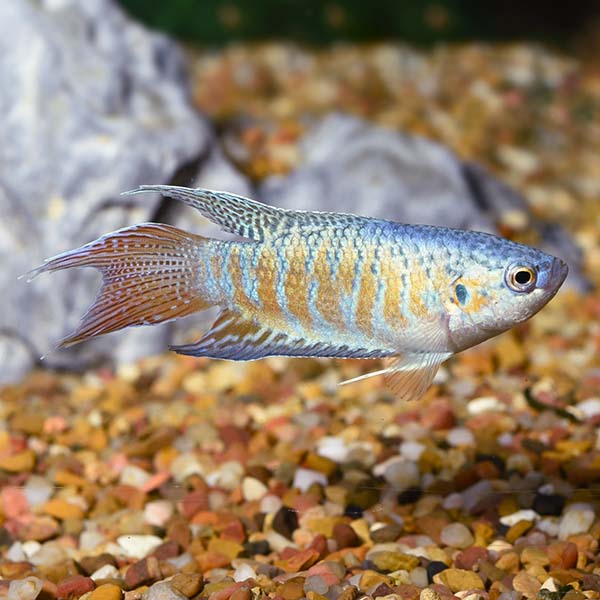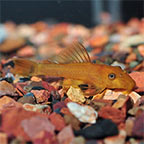
Additional locales and sizes may be available!
Additional locales and sizes may be available! Email me when availableQuick Stats
What do these Quick Stats mean? Click here for more information
What do these Quick Stats mean? Click here for more information
Overview
The Blue Paradise requires a larger aquarium, at least 30 gallons, with lots of hiding places for the female. It will not eat plants, but because of its active courtship and mock battles between tank mates, only very hardy vegetation is advised. The Blue Paradise is a territorial fish that will defend its area from its tank mates. For this reason, it should only be kept with other large, semi-aggressive fish. It will also eat smaller tank mates. Adult males should be kept one per aquarium, as they fight as fiercely as Bettas.
The male Blue Paradise has much longer fins than the female and is more brightly colored. To induce spawning, reduce the water level and increase the temperature. The male will build a bubblenest beneath a large leaf where the eggs will be stored. Breeding is relatively easy, and spawning can result in up to 500 fry. When the fry are hatched they should be fed infusoria, and when older, brine shrimp.
The Blue Paradise is an omnivore and requires both algae-based foods as well as meaty foods. An algae-based flake food, along with freeze-dried bloodworms, tubifex, and brine shrimp will provide these fish with the proper nutrition.
Approximate Purchase Size: 1-1/2" to 2-1/2"







